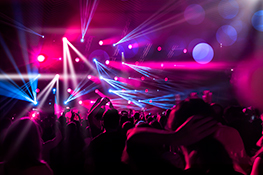Stage Lighting for Beginners: A Complete Step-by-Step Guide
Understanding the Basics of Stage Lighting
So you’re ready to dive into the fascinating world of stage lighting? Whether you’re a budding theatre technician, a passionate musician setting up your first gig, or simply curious about illuminating a performance space, this guide will walk you through the essentials. We’ll cover everything from choosing the right fixtures to mastering basic lighting techniques, making your next show a dazzling success. Let’s illuminate the path to stage lighting mastery!
Types of Stage Lighting Fixtures: A Quick Overview
A variety of stage lighting fixtures cater to diverse needs. Understanding their strengths helps you select the perfect tools for your production. Here’s a breakdown:
- Fresnel: Known for their soft, even wash and adjustable beam spread, Fresnels are ideal for background washes and highlighting.
- Ellipsoidal (Leko): Offering a sharp, focused beam with adjustable shutters for precise shaping, Lekos are perfect for spotlighting actors or objects.
- Parabolic Aluminized Reflector (PAR): These robust lights produce a powerful, wide beam, often used for general wash or effects.
- LED Par Cans: Energy-efficient and versatile, LED pars offer a wide array of color options and are becoming increasingly popular.
- Moving Heads: Automated fixtures providing incredible flexibility with pan, tilt, gobo projection, and color mixing capabilities.
Essential Stage Lighting Equipment Beyond Fixtures
Beyond the lights themselves, you’ll need supporting equipment for a successful setup:
- Lighting Console: This controls the intensity and color of your lights, allowing you to create dynamic lighting cues.
- Dimmer Packs: These regulate the power to your lighting fixtures, preventing overloading and enabling smooth intensity changes.
- Cables and Connectors: Reliable cabling is crucial for safe and efficient operation. Ensure you use the correct gauge and connectors for your fixtures.
- Barndoors and Gels: Barndoors shape the light beam, while color gels modify its hue, adding creative flair to your lighting design.
- Safety Equipment: Always prioritize safety. Use appropriate safety gear like gloves and safety glasses when handling lighting equipment.
Setting Up Your Stage Lighting: A Step-by-Step Guide
Let’s assume you’re lighting a small stage. Here’s a practical step-by-step guide:
- Planning Your Lighting Plot: Sketch a diagram of your stage and mark the positions of your lights and key areas to be lit.
- Fixture Placement: Position your lights strategically based on your plot, considering the direction and intensity of light needed.
- Cabling and Connections: Connect your lights to the dimmer packs and the console using appropriate cables and connectors.
- Addressing Your Fixtures: Assign a unique address to each fixture on your lighting console.
- Programming Your Cues: Use your lighting console to program different lighting states (cues) for various scenes or moments in your performance.
- Testing and Adjustment: Thoroughly test your lighting setup, making adjustments to achieve the desired effect.
Mastering Basic Lighting Techniques
Effective stage lighting goes beyond simply illuminating the stage. Here are some fundamental techniques:
- Key, Fill, and Back Lighting: These three types of lighting create depth and dimension, highlighting actors and objects.
- Color Mixing: Learn to blend colors to create a specific mood or atmosphere.
- Gobo Projection: Use gobos to project patterns and images onto the stage, enhancing visual interest.
Troubleshooting Common Stage Lighting Issues
Even experienced technicians encounter problems. Here are some common issues and solutions:
- Flickering Lights: Check your connections, dimmer packs, and power supply.
- Dim Lights: Inspect bulbs, connections, and dimmer settings.
- Overheating Fixtures: Ensure adequate ventilation and avoid overloading circuits.
Resources for Further Learning
To further your knowledge and skills in stage lighting, explore online tutorials, workshops, and books dedicated to lighting design and technology.
Conclusion: Illuminate Your Stage with Confidence!
With practice and a grasp of these fundamentals, you’ll be well on your way to creating stunning and effective stage lighting for your performances. Remember safety is paramount. Happy lighting!


 Auditorium Construction Services
Auditorium Construction Services 